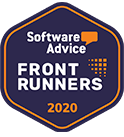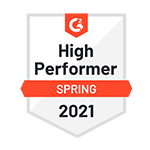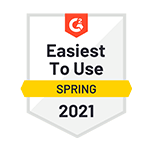As an organization, it’s essential to provide the best possible candidate experience to attract the top talent in the market. A positive candidate experience can help build a strong employer brand, increase employee engagement and retention, and reduce recruiting costs.
Glassdoor statistics show that companies that invested in creating a favorable hiring experience for candidates witnessed a 70% enhancement in the caliber of their hires.
In today’s digital age, there are several tools available that can help you provide an exceptional candidate experience. In this article, we will discuss five effective tools that can enhance your candidate experience and help you attract the best talent.
5+ Tools to Provide the Best Candidate Experience
To start off, let’s establish what it takes to maintain candidate satisfaction during the recruitment process. It’s essential to understand this before we discuss the recruitment tools that can be used to enhance the candidate experience. Here are some key components of a satisfactory candidate experience:
- A clear and realistic job description that sets appropriate expectations for potential candidates.
- A simple and user-friendly application process that allows applicants to apply via their preferred channels.
- Consistent communication with candidates throughout the hiring process, providing timely updates, feedback, and job offers or rejections.
- A designated point of contact for candidates to address any queries or concerns.
- Efficient evaluation of applicants to determine their suitability for the role.
- An opportunity for candidates to provide feedback and feel heard.
Taking these factors into account, let’s explore some recruitment tools that can help you achieve a positive candidate experience.
Applicant Tracking System (ATS)
An Applicant Tracking System (ATS) is a software tool that helps automate and streamline the recruitment process. It helps recruiters manage job postings, resumes, and candidate communications in one centralized location. An ATS can also help eliminate manual tasks, reduce bias in hiring, and improve the overall candidate experience by providing timely communication and feedback.
Recruiters have the ability to evaluate important recruitment metrics such as the duration of the hiring process, the rate of offer acceptance, and the ratio of interviews to offers. Furthermore, several Applicant Tracking Systems are available to aid in monitoring vital metrics and analytics throughout the entire recruitment process.
Video Interviewing Software
Video interviewing software allows recruiters to conduct virtual interviews with candidates, which can save time and money compared to traditional in-person interviews. Video interviews can also help reduce scheduling conflicts, increase candidate reach, and provide a better candidate experience by allowing them to participate in interviews from the comfort of their homes.
Chatbots
Chatbots are computer programs that can simulate human conversation through voice or text messages. Chatbots can help automate the initial stages of recruitment, such as answering candidate questions, scheduling interviews, and collecting information. Chatbots can provide a personalized experience for candidates by offering timely responses and reducing the wait time for communication.
A survey conducted by Allegis found that a majority of candidates, specifically 58%, are at ease with chatbot assessments that assist with answering pre-screening questions during the recruitment process. Additionally, 66% of candidates are willing to let chatbots schedule their interviews.
Skills Assessment Tools
Skills assessment tools help recruiters evaluate a candidate’s technical skills and abilities before scheduling an interview. These tools can help reduce the time spent interviewing unqualified candidates and provide a better candidate experience by giving them the opportunity to showcase their skills.
Mobile-Friendly Career Site
A mobile-friendly career site is a website that can be easily accessed on mobile devices. With more than half of job seekers using mobile devices to search for jobs, having a mobile-friendly career site is crucial. A mobile-friendly site can provide a seamless candidate experience by allowing them to apply for jobs, access company information, and communicate with recruiters on the go.
Candidate Feedback Tools
Candidate feedback tools can help you gather feedback from candidates about their experience during the recruitment process. This feedback can help you identify areas for improvement and make necessary changes to provide a better candidate experience in the future.
Text Analyzer Tools
Crafting a well-structured job description is often overlooked but is a vital component in attracting top talent. The job description serves as the candidate’s first impression of the company, making it crucial for recruiters to create high-quality, concise, and inclusive job postings that appeal to a wide range of candidates.
To achieve this, text analyzer tools are becoming increasingly important in creating more diverse and gender-neutral job descriptions, assignments, letters, and other related documents. This is especially relevant in today’s job market as companies are increasingly focused on implementing inclusive hiring practices. By using a text analyzer tool, companies can attract a more diverse pool of candidates.
If your company is committed to diversity and inclusivity, investing in a text analyzer tool is a must.
Realistic Job Previews
Realistic job assessments provide candidates with a virtual experience of a typical workday before their job interview. These assessments are particularly useful for high-volume recruitment in frontline positions. Candidates are evaluated based on their performance in realistic tasks and scenarios related to the job. These assessments offer the best candidate experience, with 96% of candidates expressing their preference for them. In today’s competitive job market, recruiters need to leverage technology to attract desired candidates.
Conclusion
Providing an exceptional candidate experience is essential for attracting top talent and building a strong employer brand. By leveraging the right tools, such as an ATS, video interviewing software, chatbots, skills assessment tools, a mobile-friendly career site, and candidate feedback tools, organizations can create a positive and efficient recruitment experience for candidates. Implementing these tools can help reduce the time to hire, improve the efficiency of the recruitment process, and ultimately lead to better hiring decisions.
FAQs
How can an ATS improve the candidate experience?
An ATS can improve the candidate experience by providing timely communication, feedback, and transparency throughout the recruitment process. Candidates can easily track their application status, receive automated updates, and communicate with recruiters through the system. The use of an ATS can also help reduce the time to hire and improve the overall efficiency of the recruitment process.
How can video interviewing software enhance the candidate experience?
Video interviewing software can enhance the candidate experience by offering a more flexible and convenient interview process. Candidates can participate in interviews from anywhere, at any time, and can avoid the need for travel. Video interviews can also provide a more personalized experience by allowing candidates to showcase their personality and communication skills. Additionally, video interviewing software can help reduce the time to hire and increase the efficiency of the recruitment process.
Can chatbots replace human recruiters?
Chatbots cannot replace human recruiters entirely. However, they can help automate and streamline the initial stages of recruitment. Chatbots can help answer common candidate questions, schedule interviews, and collect information, freeing up recruiters to focus on more high-touch aspects of recruitment. Chatbots can also provide a more timely and efficient candidate experience by offering immediate responses and reducing wait times for communication.






















